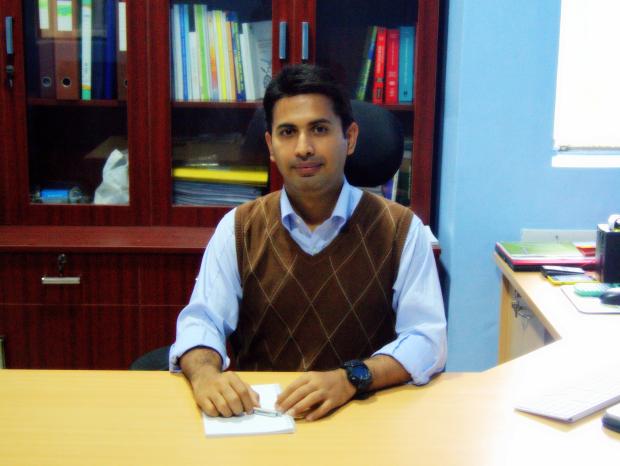
Photo: Siddharth Kankaria / Research Matters
Not many young professors are as driven as Professor Prabeer Barpanda who has been donned with an unbelievable streak of academic awards. A professor at the Materials Research Centre, Indian Institute of Science, Bangalore, Prof. Barpanda is the winner of the Indian National Science Academy Young Scientist Award, 2016. He became the first Indian to receive the Energy Technology Division Supramaniam Srinivasan Young Investigator Award – an annual award given by the Electrochemical Society (ECS), USA, for 2016. In addition, he is also the first Indian to receive the American Ceramics Society’s Ross Coffin Purdy Award, 2016 awarded in October.
Prof. Barpanda’s research is focussed on developing new materials for lithium and sodium ion batteries. He is using the energy-savvy “sonochemical synthesis” and has synthesized a series of electrode materials. The electrode materials developed in his lab with the application of this technology posses very high conductivity and are highly electro-active. In the last two years, Prof. Barpanda’s lab has successfully made two new materials using low-temperature methods – one manganese-based and the other cobalt-based. The research group has also reported the crystal structures of these new materials to ICSD, the world's largest database for inorganic crystal structures.
“In every battery, we have a battery material called cathode which contributes directly to the overall energy density – how long the battery will last or how many hours will it go on for. So, if we want to make longer lasting batteries or safer batteries, then it is important to have newer battery materials”, explains Prof. Barpanda. “At higher voltages, the energy density of the battery should increase easily, depending on the local crystal structure of iron, Cobalt, or Oxygen. Thus, we want to deliver a new inorganic material which can operate at a higher voltage”, he adds explaining the motivation behind his lab trying to make battery materials that operate at high voltages.
Prof. Barpanda has visited more than 40 countries during the course of his academic career and education and has the distinction of having academic degrees from three continents. After his Ph.D. from Rutgers University, USA he pursued his post-doctoral studies in universities in France and Japan before joining IISc. He enjoys travelling and experiencing different scientific cultures and personally considers US, Europe and Japan as the three scientific pillars in his field of research.
In the near future, Prof. Barpanda hopes to have a fully equipped lab at IISc with all necessary, state-of-the-art equipments in order to take his research to the next level. He aims to bring out a new battery material that has been researched and developed entirely in India. Besides his research goals, he also aspires to be invited as a speaker in some of the world’s top research meetings in his field. He enjoys his role as a teacher and wishes to be a learner in life. “My post-doc advisor once told me that we are all students of different age – so I’m not a faculty here, but just another good student here”, he signs off.

























